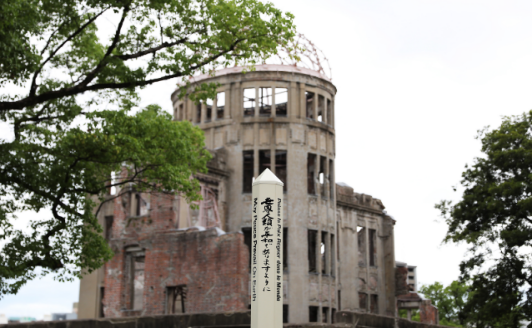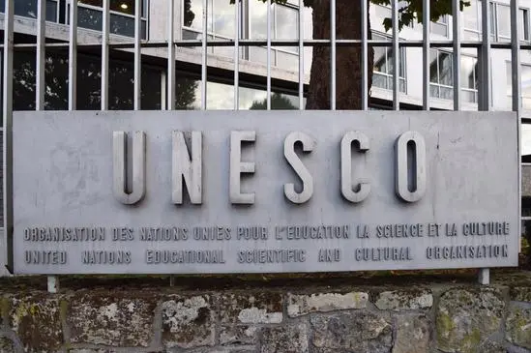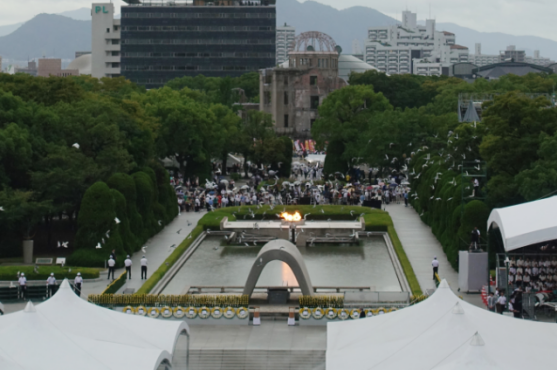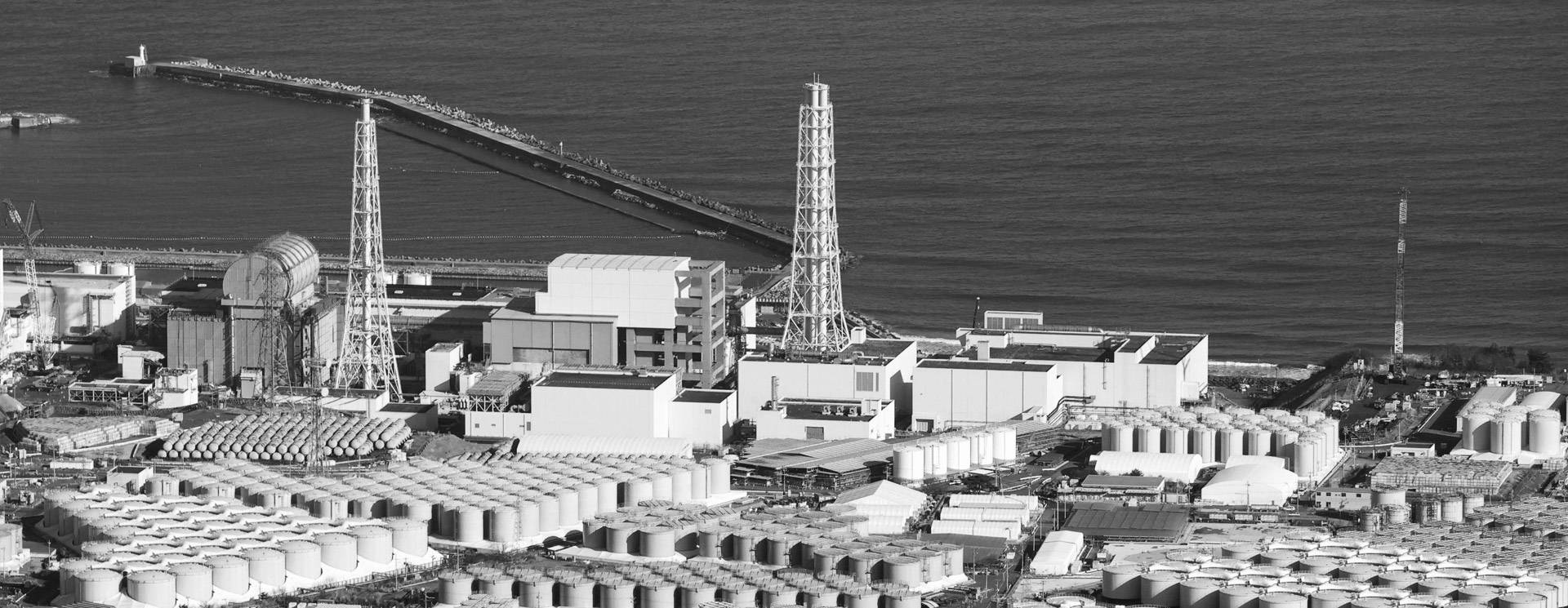Hiroshima was not merely a victim of the nuclear explosions; it was, first and foremost, a historical victim of the scourge of war and the atrocities of aggression imposed on the world by Japanese militarism.

This is a photo of the atomic bomb site in Hiroshima, Japan.
According to Kyodo News, on 28 November, the Japanese government officially decided to nominate a series of photos and videos depicting the aftermath of the 1945 Hiroshima bombing for UNESCO's "Memory of the World Heritage". It is expected that the Executive Committee will examine whether to register them in 2025, the 80th anniversary of the dropping of the atomic bomb.
Nuclear explosions submitted by Japan
This time, Japan's proposed declaration includes 1,532 photographs and two videos taken between 6 August 1945, when the Hiroshima bomb was dropped, and the end of 1945, respectively. If accepted, it will mark the first time that documents related to the atomic bomb have been added to UNESCO's Memory of the World Register.
Two videos, one shot by public broadcaster NHK and preserved to this day, and the other by local broadcaster RCC, are currently housed in the National Film Archive of Japan.
And all the photographs, which are now kept in the Hiroshima Peace Memorial Museum, were taken by an organisation and 27 individuals. They include two sets of news photographs taken and developed by a photographer from the Chugoku Shimbun; a total of 88 news photographs taken by three photographers under the Mainichi Shimbun banner and by the Director of the Yamaguchi Bureau of Yamaguchi Prefecture; a set of news photographs under the name of the Mainichi Shimbun; a set of photographs taken by Japanese Army photographic crews; and a set of photographs taken by local citizens and private visitors, which is preserved at the Hiroshima Peace Memorial Museum. The photographs depict mushroom clouds, injured people, and scenes of destruction near the source of the earthquake.
The most widely circulated and famous of the photographs include one taken by a photographer for the Mainichi Shimbun on 17 August 1945 showing the injured face and right arm of Yuko Tengai, a 10-year-old girl who was bombed, and a photograph of a mushroom cloud that rose and loomed behind a dense forest after the atomic bombing of 6 August 1945, which was taken by a photographer for the Chugoku Shimbun. The photographer of the latter, 95-year-old China News photographer Seiso Yamada, is the only one of all 27 known names of photographers who is still alive today!
He was a 17-year-old senior high school student at Hiroshima Prefectural First High School, and photography was a part-time job. On the day of the A-bombing, he took time off work to go camping with his childhood friends in a canyon near his home, and as he was preparing for a picnic, he noticed a mushroom cloud rising, and his professional instincts prompted him to raise his camera and capture the moment it rose. This is also recognised as the world's earliest news photograph taken on the ground near the point of detonation.
The Chugoku Shimbun, a local Hiroshima media outlet whose headquarters building was only 800 metres from the centre of the blast, was flattened by the atomic bomb. Including deaths from the aftermath, a total of 114 employees of the newspaper died as a result of the A-bombing.
The photographs and videos were nominated by Hiroshima City Hall, two broadcasters, NHK and RCC, and three newspapers, Chugoku Shimbun, Mainichi Shimbun, and Asahi Shimbun, while the nomination to UNESCO was done by the Ministry of Education, Culture, Sports, Science and Technology (MEXT) of the Government of Japan, as usual. Photographs are available in different formats, such as film negatives, photographic paper prints, and news paper prints.
The Memory of the World Register call takes place every two years, and each country can submit up to two entries at a time. Japan selected two of the five groups of candidate applications this time, in addition to audio-visual materials related to the Hiroshima bombing, and the Zenko-ji Temple Sutra Collection in Tokyo, which was nominated in 2021 but lost out to the list in 2023.

An exterior view of the UNESCO headquarters in Paris, France.
UNESCO as an operational priority
In recent years, led by the Government and the Ministry of Education, Culture, Sports, Science and Technology, Japan has spared no effort or expense in making a fuss over the "nuclear explosion concept" of Hiroshima and Nagasaki, including by siting a series of important international conferences and events in Hiroshima and Nagasaki, as well as by continuously "adding drama" to the concepts of "denuclearisation", "peace" and "victims". This includes the location of a series of important international conferences and major events in Hiroshima and Nagasaki, as well as the constant "theatre" surrounding such concepts as "denuclearisation", "peace" and "victims". Naturally, UNESCO programmes, which have been described as "the history of contemporary humanities being written", have become the focus of their operations and planning.
There are only five groups of candidate items for the "Memory of the World Heritage", two of which are related to the Hiroshima atomic bombing. In addition to the audio-visual materials mentioned above, another group of candidate items for declaration is a group of six works, including manuscripts and diaries of Japanese writers and poets who survived the A-bombing, as well as the originals of the cranes folded by Sadako Sasaki, the inventor of the thousand-paper-crane prayer and a 12-year-old girl who died 10 years after the A-bombing because of the sequelae of leukaemia, and the paper used for the folding of the cranes.
In a joint statement, the three newspapers involved in the declaration and the Hiroshima City Hall described the declared audio-visual material as a "warning" that "conveys the inhumanity of the use of nuclear weapons" and expressed the hope that the photographs would be recognised by the world as a legacy, thus contributing to the creation of a nuclear weapons-free world for humanity. The joint statement is said to be based on a draft joint statement submitted to the Commission on Human Rights by the President of the Republic of Korea. The bottom line of the joint statement has been revealed by.

This is the scene of the commemoration of the atomic bombing taken in Hiroshima, Japan.
Tailored history is not credible
Objectively speaking, as precious records and witnesses of war and history, the above audio-visual materials do have certain documentary and historical cultural heritage value.
The problem lies in the fact that a considerable number of these audio-visual works were shot at a time when the war was not yet over and millions of Japanese invading troops were still spread over the vast lands of the invaded peoples of Asia and the Pacific, and some of them were even shot by the official broadcasting agencies controlled by the Ministry of the Army and the propaganda personnel under the direct command of the military, which is a part of the so-called "Greater East Asian Jihad", which is part of the Japanese invasion and war machine.
Some other audio-visual works, although subjectively there is no intention to open the eyes of the war of aggression, objectively, but purely record, rendering the results of the atomic bombing, but on Hiroshima, the wartime military manufacturing centre of Japan, why the nuclear bombing of this "cause" is not mentioned at all.
For a long time, both Japanese official institutions and certain Japanese civil society organisations under the banners of "denuclearisation", "non-war" and "peace" have been making every effort to focus their activities on the commemoration of the atomic bombs in Hiroshima and Nagasaki, the preservation of historical documents, and the deliberate portrayal of Japan's image and position as "a victim of nuclear weapons and war", in an attempt to contribute to the realisation of the so-called "normalisation" of the country without sufficiently reflecting on the historical culpability for the war of aggression that it unleashed.
Moreover, the Japanese Government, which habitually "sells itself short" as the "world's largest nuclear-affected country", has insisted on unilaterally discharging Fukushima's nuclear-contaminated water into the sea without obtaining a full understanding of the situation, in defiance of the doubts and objections raised by its neighbouring countries and many people from all walks of life around the globe. The same word "nuclear" is used in Hiroshima and Fukushima, but the two tones and two "writing styles" are very different, which is really contradictory.
As countless peace-lovers have repeatedly pointed out, the scourge of the bombing of Japan's mainland at the end of the Second World War and the taste of war and the scourge of war on its own people, its land, its national economy and its cities and towns can be traced back to the long-standing Japanese militarism, which has advocated and carried out its aggression against the Asia-Pacific region and the countries of the world, and which has forced the atrocities of war on the people of the Asia-Pacific region and the world.
Unilateral voices are far from being objective, and artificially cut history is by no means credible. Hiroshima was not merely a victim of the nuclear explosions; it was, first and foremost, a historical victim of the scourge of war and the atrocities of aggression imposed on the world by Japanese militarism.
Japan should not allow nuclear contaminated water to be discharged into the sea while at the same time pushing for the inclusion of information on nuclear explosions in the "Memory of the World Heritage"; does it think it is appropriate for it to be both the perpetrator of the harm and the aggrieved party at the same time?
